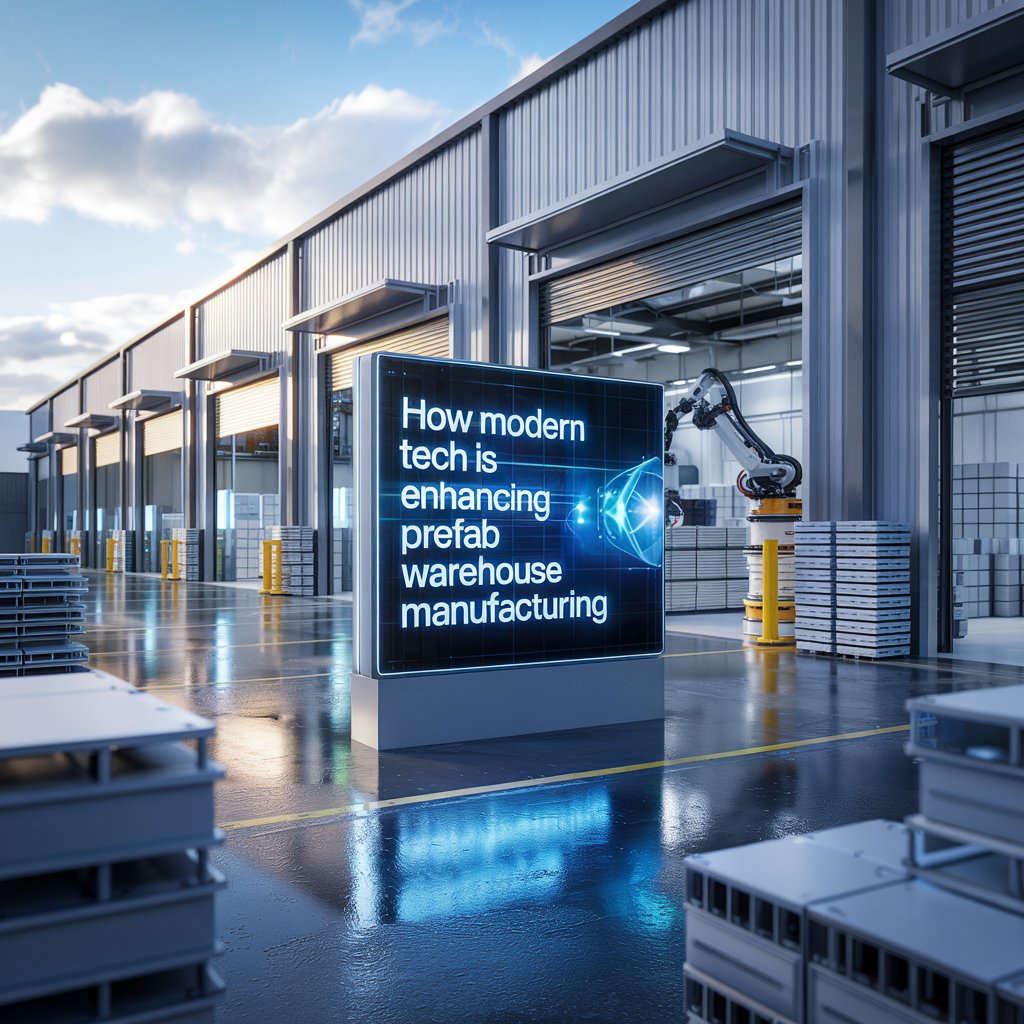In an era where speed, precision, and sustainability drive industrial decisions, the rise of modern technology in construction is reshaping how we build, store, and operate. For prefabricated warehouse manufacturing, this transformation isn’t just about automation—it’s about redefining the entire supply chain process from design to deployment.
The Role of Technology in Prefabricated Warehouse Manufacturing
Prefabricated warehouses, once seen as basic steel structures for temporary use, have evolved into highly engineered, customizable, and energy-efficient facilities. This evolution is largely due to advancements in digital tools, smart manufacturing, and innovative materials. Today, prefabricated warehouse manufacturing are leveraging cutting-edge technologies to improve structural integrity, reduce costs, and deliver faster project turnarounds.
1. Building Information Modeling (BIM)
BIM is revolutionizing how warehouses are designed. It enables manufacturers and clients to visualize the entire project in 3D before a single component is fabricated. This clarity helps in detecting design clashes, optimizing layouts, and streamlining coordination between stakeholders. Prefabricated warehouse manufacturers benefit by minimizing material waste, reducing rework, and ensuring a faster and more efficient construction timeline.
2. Robotics and Automation
Incorporating robotics in the manufacturing process allows for greater precision and consistency. Automated welding machines, robotic arms for material handling, and CNC machines are becoming standard in prefabricated warehouse production lines. These technologies not only speed up the fabrication process but also ensure high-quality output with fewer human errors.
Robotic assembly also plays a crucial role in large-scale warehouse production. Components such as trusses, frames, and panels can be pre-assembled in controlled environments, ensuring uniformity and strength. For prefabricated warehouse manufacturers, this means higher efficiency and lower operational costs.
3. 3D Printing in Prototyping and Component Fabrication
While full-scale 3D printing of warehouses is still an emerging concept, manufacturers are already using 3D printing to create prototypes and small components. This innovation allows quick testing of design changes and helps speed up the development phase. Some prefabricated warehouse manufacturers are even exploring 3D-printed molds and tools to accelerate the fabrication of customized parts.
4. Smart Materials and Sustainable Innovations
Modern prefab warehouses are expected to perform more than ever—be it in thermal insulation, weather resistance, or sustainability. This demand has led to the use of smart materials like self-healing concrete, corrosion-resistant steel, and insulated sandwich panels that offer enhanced energy efficiency.
These materials not only extend the lifecycle of the warehouse but also support green building certifications. For prefabricated warehouse manufacturers, integrating such materials adds significant value to their offerings while aligning with global sustainability goals.
5. IoT and Smart Monitoring
Internet of Things (IoT) is making warehouses smarter and more manageable. Sensors embedded into warehouse structures allow real-time monitoring of temperature, humidity, structural stress, and even usage patterns. This data-driven approach enables facility managers to predict maintenance needs, optimize energy usage, and ensure safety compliance.
Manufacturers are beginning to include IoT capabilities within their design frameworks, offering clients a tech-enabled structure from day one. It adds a digital edge to what was once a purely physical infrastructure.
6. Augmented Reality (AR) and Virtual Reality (VR)
AR and VR are becoming powerful tools in client presentations and training. For example, prefabricated warehouse manufacturers can use VR to take clients on virtual tours of their yet-to-be-built facilities. This immersive experience helps clients make informed decisions about space usage, logistics flow, and customization options.
Additionally, AR can aid construction teams during the assembly phase by overlaying instructions and real-time data onto physical environments, reducing errors and accelerating the building process.
7. Cloud-Based Project Management
Collaboration is key in any construction project, and cloud technology ensures everyone stays on the same page. From architects to engineers and project managers, cloud-based platforms allow seamless sharing of updates, blueprints, timelines, and approvals.
For prefabricated warehouse manufacturers, this means fewer delays, better resource allocation, and improved communication across departments and with clients.
8. Digital Twin Technology
An emerging innovation in the prefab industry is the use of digital twin technology. This involves creating a virtual replica of a warehouse that mirrors its real-world counterpart. It allows continuous monitoring, predictive maintenance, and data-driven decision-making throughout the lifecycle of the warehouse.
Prefabricated warehouse manufacturers are increasingly adopting this to offer clients advanced analytics and operational control. It’s especially useful in large-scale industrial environments where even small efficiencies can translate to major cost savings.
9. AI-Driven Design Optimization
Artificial Intelligence (AI) is now playing a vital role in optimizing design and planning processes. AI algorithms can simulate different design variations, forecast energy usage, and even suggest layout improvements. For prefabricated warehouse manufacturers, this means smarter resource management and better end results without increasing man-hours.
Furthermore, AI tools help in demand forecasting, helping manufacturers manage supply chains more effectively, avoid material shortages, and reduce overproduction.
Conclusion
The future of industrial infrastructure is not just in steel and bolts but in codes, sensors, and automation. Prefabricated warehouse manufacturers are at the forefront of this transformation, using modern technology to create smarter, faster, and more resilient warehouse solutions.
As industries demand more agility and efficiency, the integration of these technologies will continue to elevate the standards of prefab construction. From BIM to IoT, each advancement is a step toward building the warehouses of tomorrow—today.
In a world driven by rapid growth and digital transformation, partnering with forward-thinking prefabricated warehouse manufacturers provides a strategic advantage. Businesses can benefit from shorter construction cycles, reduced costs, enhanced sustainability, and smarter operational capabilities.
Ultimately, the synergy between technology and prefabrication is not just a trend—it’s the future of industrial development. Choosing innovation today ensures long-term competitiveness tomorrow.







